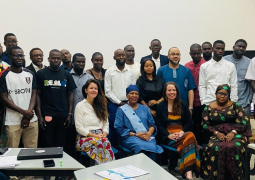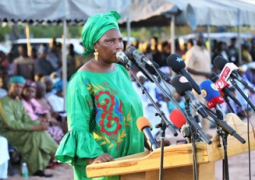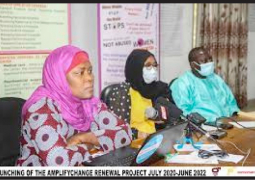
The event held at the Baobab Hotel, attracted officials from key stakeholders. The evaluation result indicates a reasonably high degree of accuracy, consequently encouraging the release of the forecast product for the consumption of the beneficiaries.
Speaking at the forum, Lamin Mai Touray, director at the Department of Water Resources, said that Department annually released seasonal rainfall predictions in fulfillment of its statutory responsibilities to advise government and people on all aspects of weather and climate patterns.
The SRP, he added, gives the outlook of rainfall patterns in The Gambia for the period July-August and September (JAS).
“DWR releases these forecasts using State-Of-The-Art forecasting tools and contemporary scientific knowledge. The information presented in the SRP publication is relevant for policy formulation, planning and decision making by operators, stakeholders, and individuals in both private and public sectors in the Gambia.”
He emphasised that the forecast is useful particularly for operators in weather-sensitivity sectors such as agriculture, aviation, construction, water resources, disaster risk reduction, health, energy, trade and tourism, amongst others.
Touray said that as the country survives the impact of the COVID-19 pandemic, there is no better time than now to embrace the ever-expanding reach of the Department’s SRP in our society.
“And as disastrous weather and climate events continue to intensify; bringing hardship to the helpless populace and straining the already stressed economy, this is not the time to walk blindly into the future. By the middle of this year, it would be exactly twelve years since The Gambia came face-to-face with a climate disaster of proportion.”
Also speaking representative of FAO, Lamin Saine acknowledged that it is important to note that farmers receiving seasonal weather forecasts are more likely to adopt cropping and livestock production systems that are adapted to the expected weather conditions.
He reminded that weather plays an important role in agriculture production and has a profound influence on the growth, production, incidence of pests and diseases, water needs and rangeland productivity.
“Occurrences of erratic weather are beyond human control but it is possible, however, to adapt to or mitigate the effects of adverse weather if a forecast of the expected weather can be obtained in time. Weather forecasting in food and agriculture is more than a scientific curiosity but it’s about providing information that people and organizations can use to reduce weather-related losses and enhance societal benefits, including protection of life and property, public health and safety.”
For his part, Ismaila Danso, deputy permanent Secretary said that sub-Saharan Africa in general is considered as one of the most vulnerable regions to the effects of climate variability and change, due to the fragility of its economy.
“This is essentially based on the exploitation of local natural resources, which is highly dependent on changes in the characteristics of the rainy season (spatial and temporal distribution of the rainfall, onset and cessation dates of the rainy season, length of dry spells, river basin runoff). These characteristics of the season have high impacts on agro pastoral production, and therefore on the food and nutritional security of populations as well as on the occurrence of extreme hydro climatic phenomena (floods, drought).”





